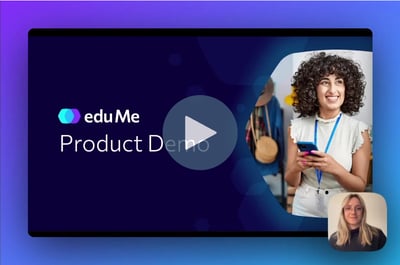Though we believe remote training is the future of employee training, like most other corporate processes, it’s something that needs strategic implementation and roll out.
So how exactly do you go about doing that? Read on to discover how...
1. Carry out a training needs analysis
Where do gaps exist in peoples’ knowledge? And how would they like to learn?
Perhaps people would like to access training via a desktop as opposed to on mobile. Or would like to have the human touch replicated via video learning as much as possible. Gathering feedback is the first step to any effective remote training program.
Send out a questionnaire to establish knowledge gaps and learning needs, and preferred ways of learning.
2. Prepare the assets
Did your learning needs analysis illuminate that employees found their onboarding process was not comprehensive enough, nor do they feel up to date on Health & Safety training?
Did you find people wanted to learn via instructional animated videos dispersed via a remote training tool? Or would they prefer text and image-based modules with interactive features like quizzes to embed knowledge?
Once you know this information, get started with compiling the assets you need for relevant courses.
3. Find your medium
Once you have the material, you need a medium through which to disperse it. The most efficient way to via an online learning platform, remote training tool or learning management system (LMS).
They can be used for everything from onboarding courses, to Health & Safety and HR Training.
There are many out there all with different features, so make sure to do your research to establish which one suits your needs best.
4. Establish a schedule
Training isn’t finite - it should be continuous. You should be engaging and upskilling your people in an ongoing way. Why?
Knowledge is inherently engaging and engaged employees are 20% more productive, have output that is 40% higher quality and are 41% less likely to skip work.
Beyond this, it future-proofs your company and makes you flexible in the face of change and uncertainty. In the world of work, the only certainty is uncertainty - regulation and legislation, workforce demographics, technologies are all constantly evolving.
So once you’ve gone to the effort of setting remote learning up, don’t let learning become a one-off event. For remote learning (as with any learning) to truly be effective, you must make a habit out of creating and sharing new material.
5. Set goals and objectives
Setting goals and objectives at the start of each lesson is important. It helps L&D (Learning & Development) Managers identify the purpose of learning and direct the content creation process accordingly, helping establish what you need to achieve the outcomes you’ve set.
From a learner perspective, objectives provide clarity around expectations and motivate performance. They tell you what you are expected to know following a piece of learning, which gives you a benchmark to aspire toward achieving.
Objectives also come in use if you need to assess employees formally.
6. Monitor results
A remote learning tool will allow you to track results and progress. This is another reason remote training surpasses face-to-face training.
When you are teaching someone face-to-face, you can ask them what they don’t understand, but often they may not reveal the true extent of their knowledge gaps. You are unable to see into their mind and pinpoint what knowledge is missing, unless they willingly communicate it. And if you are training several people one-to-one, you may forget an individuals’ response, or to follow up with them.
But remote training software is immune to these problems. The numbers sit eternally in a dashboard ready for you to access them whenever you need to. You can identify knowledge gaps with pinpoint accuracy.
7. Survey, survey, survey
Feedback gathering should bookend the process - start and finish with it.
There is no party that does not benefit from this practice. When employees feel as though their voice is heard, they are 4.6 times more likely to perform at their very best. So make sure to check in with employee sentiment routinely, as a follow-up to any learning you send out.
And not only will it inspire loyalty and productivity in your people, but it is vital for your own content creation purposes too. One key way to illuminate knowledge gaps is to ask.
By asking questions, you inform your future learning material and craft it around what people need to know from concrete re
Looking for an easy way to inform, train and engage your people, wherever they are and whenever they need it?






